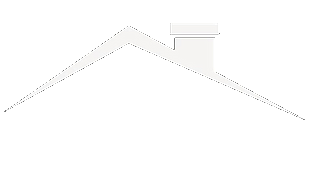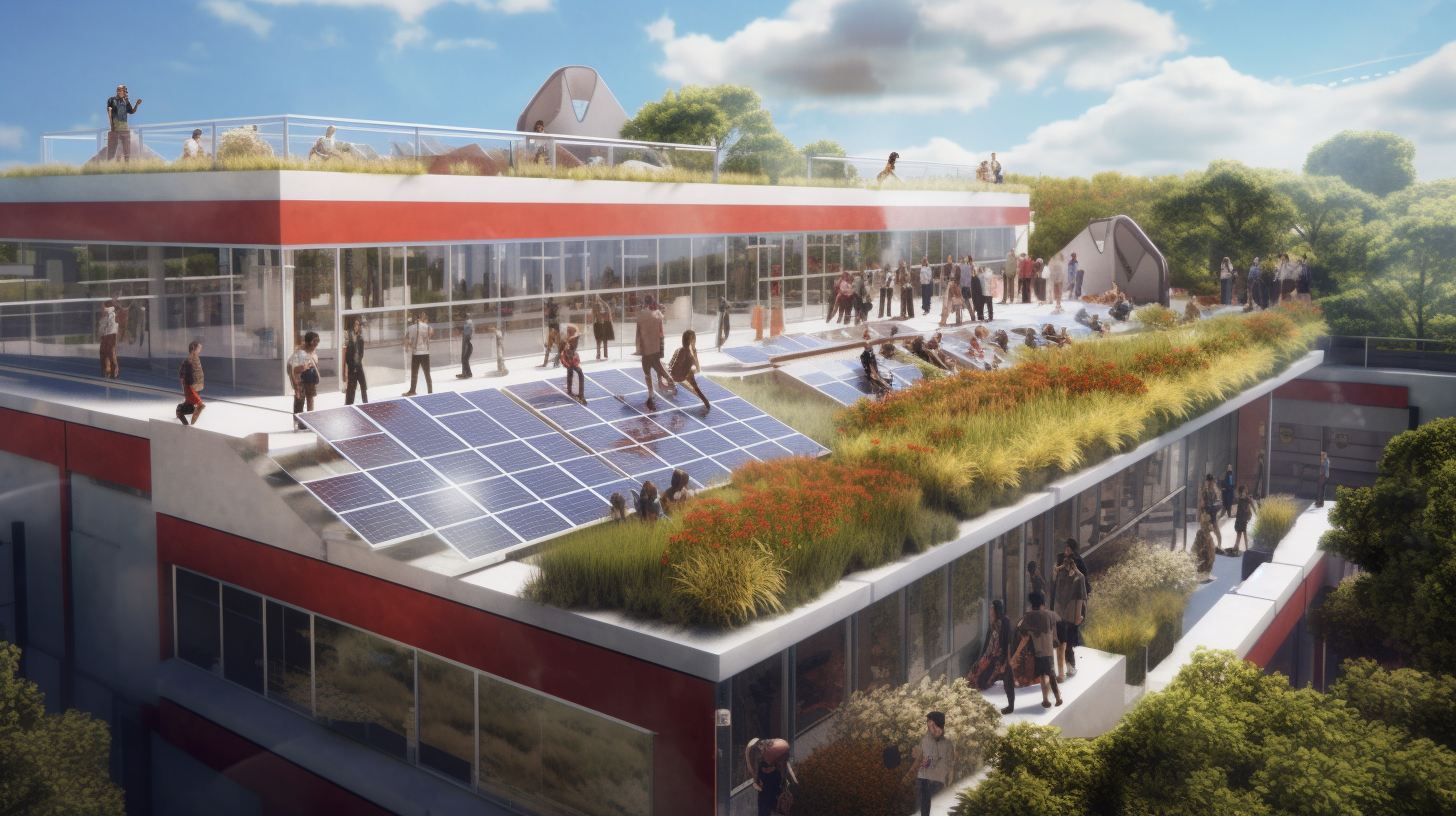If you’re looking for a way to make your school or university more sustainable, consider installing solar panels on your educational roofs. Not only will this help to reduce your carbon footprint, but it will also provide a range of educational and financial benefits for your institution.
Solar panel installations on educational roofs are a great way to generate renewable energy for education. By harnessing the power of the sun, you can reduce your reliance on non-renewable energy sources and help to mitigate the effects of climate change.
In addition, solar panels can provide a range of educational benefits, such as allowing students to learn about renewable energy and sustainability in a hands-on way. Plus, with potential cost savings on energy bills, solar panel installations can be a smart financial decision for your institution as well.
In this article, we’ll explore the environmental benefits of solar panel installations, the educational benefits for students, and the steps to take to get started with solar panels on your educational roofs.
Environmental Benefits of Solar Panel Installations on Educational Roofs
Installing solar panels on educational roofs not only reduces greenhouse gas emissions but also provides a hands-on opportunity for students to learn about sustainable energy. The financial viability of solar power has improved significantly in recent years, making it a cost-effective and sustainable energy solution for educational institutions. By investing in solar panel installations, schools can reduce their energy bills and generate revenue by selling excess energy back to the grid. This not only saves money for the school but also frees up resources that can be allocated towards education.
In addition, solar panel installations on educational roofs can provide community engagement opportunities. Schools can partner with local businesses and organizations to promote sustainability and renewable energy, fostering a sense of community and environmental responsibility. By demonstrating their commitment to sustainable energy, schools can also attract environmentally conscious students, faculty, and staff.
Overall, installing solar panels on educational roofs not only benefits the environment but also provides financial savings and community engagement opportunities for schools. This hands-on approach to sustainable energy education can inspire students to become future leaders in the field.
Moving on to the educational benefits of solar panel installations, students can gain valuable knowledge and skills in science, technology, engineering, and mathematics (STEM) fields.
Educational Benefits of Solar Panel Installations
If you’re considering incorporating solar panel installations into your educational facility, there are a few key educational benefits to keep in mind.
Firstly, incorporating renewable energy into your curriculum is a great way to teach students about the importance of sustainability and reducing carbon emissions.
Additionally, solar panel installations can encourage student engagement in learning by providing hands-on opportunities for students to learn about renewable energy technology and installation processes.
So not only can solar panel installations save your school money on energy costs, but they can also contribute to a more well-rounded educational experience for your students.
Incorporating Renewable Energy into Curriculum
You can easily incorporate renewable energy into your curriculum by utilizing solar panels on your educational roof. Not only does this provide practical applications of renewable energy projects, but studies show that schools with solar panels have a 5% increase in student performance.
Here are some ways you can integrate renewable energy into your curriculum:
- Teach about the benefits of renewable energy sources and how solar panels work.
- Use data from your solar panels to teach about energy production and consumption.
- Incorporate renewable energy into science experiments, such as testing the efficiency of different types of solar panels.
- Discuss the economic and environmental impact of using renewable energy sources.
- Encourage students to think critically about the importance of sustainability and how they can make a difference.
By incorporating renewable energy into your curriculum, you not only provide students with a hands-on learning experience, but also encourage them to think about their impact on the environment. This can lead to a greater engagement in learning and a desire to make positive changes in the world around them.
Encouraging Student Engagement in Learning
Get your students excited about learning by incorporating interactive activities and hands-on projects that encourage them to think critically and engage with the material.
When it comes to renewable energy education, there are plenty of opportunities for hands-on learning that can boost student motivation and engagement. For example, you could organize a solar panel installation project that allows students to work together to install solar panels on the school roof. This would not only teach them about the benefits of renewable energy, but also give them the opportunity to learn practical skills like wiring and installation.
Another way to encourage student engagement is to incorporate renewable energy into existing curriculum. For instance, you could have students calculate the energy output of solar panels and compare it to traditional energy sources, or have them design and build their own miniature wind turbines.
By giving students the chance to be hands-on with renewable energy, you can motivate them to learn more about this important topic. With these engaging activities, students will be able to see firsthand the benefits of renewable energy and become more invested in creating a sustainable future.
Speaking of benefits, let’s explore how solar panel installations can save your school money in the long run.
Cost Savings of Solar Panel Installations
By installing solar panels on educational roofs, schools can save a significant amount of money on energy costs while also helping the environment. The initial investment may seem daunting, but the long-term benefits of solar panel installations far outweigh the costs.
The return on investment for solar panels typically ranges from 3-10 years, depending on the size and efficiency of the system. After that, schools can enjoy free electricity for years to come.
In addition to cost savings, solar panel installations also offer environmental benefits. Schools can reduce their carbon footprint and contribute to a cleaner, more sustainable future. By setting an example for students, schools can also inspire the younger generation to take action and make a positive impact on the environment.
Now that you understand the cost savings and environmental benefits of solar panel installations, let’s explore the different types of solar panel installations available for educational roofs.
Types of Solar Panel Installations
Let’s take a closer look at the various ways you can harness the power of the sun to save money and reduce your school’s impact on the environment.
There are different types of solar panels that you can install on your school’s roof, such as monocrystalline, polycrystalline, and thin-film solar panels. Monocrystalline panels are made from a single silicon crystal and are highly efficient, while polycrystalline panels are made from multiple silicon crystals and are more affordable. Thin-film solar panels, on the other hand, are lightweight and flexible, making them ideal for irregularly shaped roofs.
Aside from the types of solar panels, there are also different installation techniques that you can choose from. The most common installation techniques are flush-mounted, ballasted, and tilted. Flush-mounted panels are installed directly onto the roof, while ballasted panels are held in place by weight and do not require any drilling. Tilted panels, on the other hand, are angled towards the sun for maximum efficiency.
By understanding the different types of solar panels and installation techniques available, you can make an informed decision on which system is best suited for your school’s roof and energy needs. This will lead us to the next section where we’ll discuss the steps to install solar panels on educational roofs.
Steps to Install Solar Panels on Educational Roofs
Before installing solar panels on your educational roof, you need to conduct a feasibility study to determine if your roof is suitable for solar panel installation.
After that, you need to obtain the necessary permits from your local government before starting the installation process.
It’s important to choose a reputable solar panel installation company that can provide quality workmanship.
Don’t forget to plan for maintenance and monitoring to ensure your solar panels are operating efficiently for years to come.
Conducting a Feasibility Study
You can conduct a feasibility study to determine the potential for solar panel installations on your educational roof. This study will help you understand if a solar panel system is a worthwhile investment for your school. Here are three steps you can take when conducting a feasibility study:
- Site Assessment: The first step is to conduct a site assessment of your educational roof. You need to analyze the roof’s physical characteristics, such as its orientation, shading, and slope. This will help you determine the solar panel system’s optimum size and the potential energy production capacity.
- Financial Analysis: The second step is to conduct a financial analysis. You need to calculate the expected cost of the solar panel system, including installation and maintenance costs, and compare that with the expected savings on your energy bill. You also need to consider any incentives or grants that may be available to help offset the initial cost.
- Project Timeline: The third and final step is to develop a project timeline. This timeline should outline the various stages of the project, including the design, installation, and maintenance phases. You should also consider any potential obstacles, such as weather delays or permit applications, and factor those into your timeline.
After conducting a feasibility study and determining that solar panel installations on your educational roof are a worthwhile investment, you can move on to obtaining the necessary permits.
Obtaining Permits
Once you’ve made the decision to pursue solar energy for your school, it’s time to start navigating the process of obtaining the necessary permits. Permit requirements vary by location, so it’s important to research what permits your school will need to obtain before starting the application process. Generally, schools will need to obtain building permits, electrical permits, and possibly zoning permits. The application process can be lengthy, so it’s important to start early and allow ample time for any necessary reviews and inspections.
To better understand the permit requirements and application process, refer to the table below. It outlines the common permits required for solar panel installations and the associated fees. In addition, it provides a brief overview of the application process and estimated timeline for each permit type. Keep in mind that this is a general guide, and requirements may vary by location. It’s always best to refer to your local government’s website or speak with a permit professional for specific guidance.
Now that you’ve obtained the necessary permits for your solar panel installation, it’s time to choose a solar panel installation company.
Choosing a Solar Panel Installation Company
Selecting a reputable and experienced solar installation company is crucial in ensuring a successful and efficient transition to sustainable power for your school. When choosing installation criteria, it’s important to consider the size and layout of your school’s roof, the amount of energy needed, and the types of solar panels that will work best for your location.
A professional solar company should be able to provide an assessment of your school’s energy needs and recommend the appropriate type and number of solar panels. Comparing pricing options is also an important factor to consider when choosing a solar panel installation company.
Request quotes from multiple companies and compare the cost of installation, warranties, and ongoing maintenance services. It’s important to choose a company that offers a fair price without compromising quality.
By choosing a reputable and experienced solar panel installation company, you can ensure that your school will receive a reliable and efficient renewable energy system. In the next section, we will discuss the importance of maintenance and monitoring for your solar panel system.
Maintenance and Monitoring
Now that you have chosen a solar panel installation company, it’s important to understand the importance of maintenance and monitoring. Preventative maintenance is crucial to ensure that your solar panels are operating at their maximum efficiency. This includes regular cleaning and inspections, as well as addressing any issues that arise promptly. Neglecting maintenance can lead to decreased performance and even damage to your solar panels.
Performance monitoring is also essential to ensure that your solar panels are generating the expected amount of energy. This involves tracking your system’s energy production and identifying any deviations from expected performance. By identifying any issues early on, you can take corrective action and ensure that your system is operating optimally. Incorporating both preventative maintenance and performance monitoring into your solar panel installation plan can help you maximize your investment and ensure that your system is generating renewable energy for education.
| Pros | Cons |
|---|---|
| 1. Lower energy bills | 1. Upfront costs can be expensive |
| 2. Reduced carbon footprint | 2. Weather can affect performance |
| 3. Increased property value | 3. Requires regular maintenance |
| 4. Educational opportunities for students | 4. May require permits and approvals |
| 5. Reliable source of energy | 5. May not be suitable for all roof types |
By investing in solar panel installations on educational roofs, you not only reduce your carbon footprint but also provide educational opportunities for students. Additionally, you can enjoy lower energy bills and increased property value. While there are some potential drawbacks, such as upfront costs and regular maintenance requirements, the benefits outweigh the cons. It’s crucial to incorporate preventative maintenance and performance monitoring into your solar panel installation plan to ensure that your system is operating efficiently and generating renewable energy for education.



